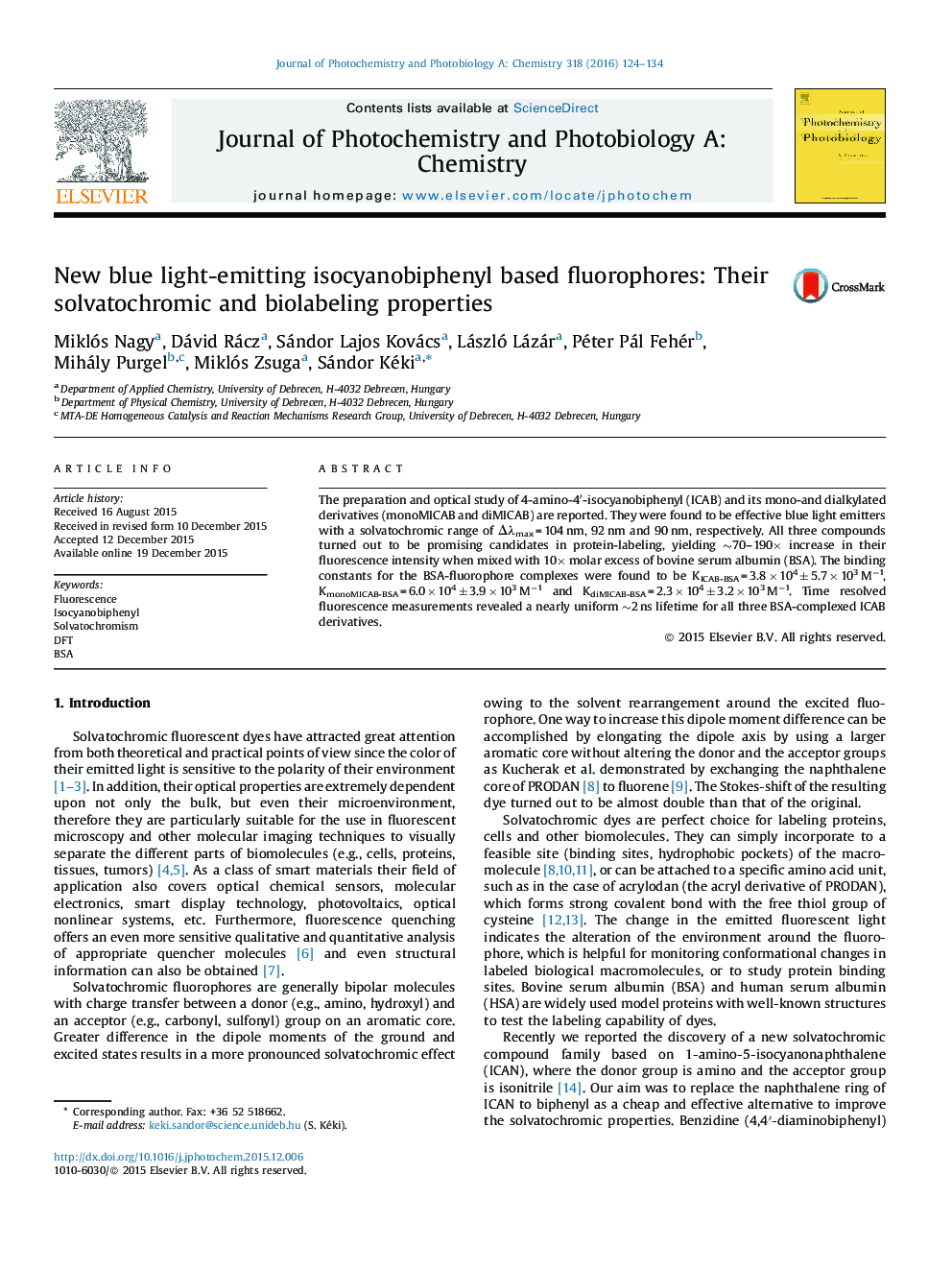| Article ID | Journal | Published Year | Pages | File Type |
|---|---|---|---|---|
| 26220 | Journal of Photochemistry and Photobiology A: Chemistry | 2016 | 11 Pages |
•New, blue light-emitting isocyanobiphenyl based fluorophore family was developed.•They can be a cheap, easy to prepare alternative to commercial solvatochromes.•The ICAB derivatives turned out to be efficient biolabeling agents with BSA.•Simultaneous static and dynamic quenching were observed with pyridine.•High-level DFT calculations was applied to describe the fluorescence behavior.
The preparation and optical study of 4-amino-4′-isocyanobiphenyl (ICAB) and its mono-and dialkylated derivatives (monoMICAB and diMICAB) are reported. They were found to be effective blue light emitters with a solvatochromic range of Δλmax = 104 nm, 92 nm and 90 nm, respectively. All three compounds turned out to be promising candidates in protein-labeling, yielding ∼70–190× increase in their fluorescence intensity when mixed with 10× molar excess of bovine serum albumin (BSA). The binding constants for the BSA-fluorophore complexes were found to be KICAB-BSA = 3.8 × 104 ± 5.7 × 103 M−1, KmonoMICAB-BSA = 6.0 × 104 ± 3.9 × 103 M−1 and KdiMICAB-BSA = 2.3 × 104 ± 3.2 × 103 M−1. Time resolved fluorescence measurements revealed a nearly uniform ∼2 ns lifetime for all three BSA-complexed ICAB derivatives.
Graphical abstractFigure optionsDownload full-size imageDownload as PowerPoint slide
